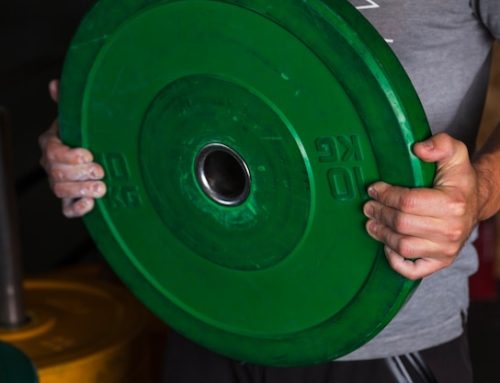The Science behind High-Rep Weightlifting and Muscle Growth
If you’ve ever wondered how athletes are able to gain muscle so quickly, chances are that high-rep weightlifting has something to do with it. High-rep weightlifting involves lifting weights at a relatively low intensity, but with a high number of repetitions per set. The result is a significant increase in muscle size and strength over time.
The Basics of High-Rep Weightlifting
High-rep weightlifting is a training technique that has been used by athletes for years to increase muscle size and strength. This type of training involves lifting weights at a lower intensity, usually around 60% of your one rep max, for a higher number of reps per set, usually between 12 and 20 reps. The goal of high-rep weightlifting is to fatigue the muscle fibers to the point where they break down and rebuild stronger, resulting in increased size and strength.
The Science behind Muscle Growth
Muscle growth, or hypertrophy, occurs when the muscle fibers experience a sufficient amount of stress or tension. When you perform high-rep weightlifting, you are creating this stress by causing muscle damage through the repetitive motion of lifting weights. This damage triggers a process called protein synthesis, which is the process of building new muscle fibers to repair the damaged ones.
The Importance of Progressive Overload
In order to continue to see gains in muscle size and strength, it is important to continually challenge the muscle fibers with progressive overload. This means increasing the weight, reps, or sets over time to continue to create that stress on the muscle fibers. Without this progression, the muscle fibers will adapt to the existing stress and stop growing.
The Benefits of High-Rep Weightlifting
High-rep weightlifting has a number of benefits for athletes, including increased muscle size and strength, improved muscular endurance, and improved cardiovascular health. Additionally, high-rep weightlifting can be a useful tool for individuals who are looking to lose weight, as it can help to increase metabolism and burn calories.
The Risks of High-Rep Weightlifting
While high-rep weightlifting can be an effective training technique, there are some risks associated with it. One potential risk is injury, as the repetitive motion of lifting weights can put a significant amount of stress on the joints and muscles. Additionally, high-rep weightlifting can be physically demanding, and may not be suitable for individuals with certain health conditions or injuries.
How to Incorporate High-Rep Weightlifting into Your Training
If you’re interested in incorporating high-rep weightlifting into your training, it’s important to start slowly and gradually increase the weight, reps, and sets over time. It’s also important to use proper form and technique to minimize the risk of injury. Finally, be sure to give your muscles time to rest and recover between workouts to allow for proper muscle growth and repair.
Conclusion
High-rep weightlifting can be a highly effective training technique for athletes looking to increase muscle size and strength. By challenging the muscle fibers with progressive overload, high-rep weightlifting can trigger the process of protein synthesis, resulting in increased muscle growth over time. However, it’s important to be aware of the potential risks and to incorporate high-rep weightlifting into a well-rounded training program that includes other types of training, such as cardiovascular exercise and flexibility training. With proper technique and proper rest and recovery between workouts, high-rep weightlifting can be an effective tool for achieving your fitness goals.






